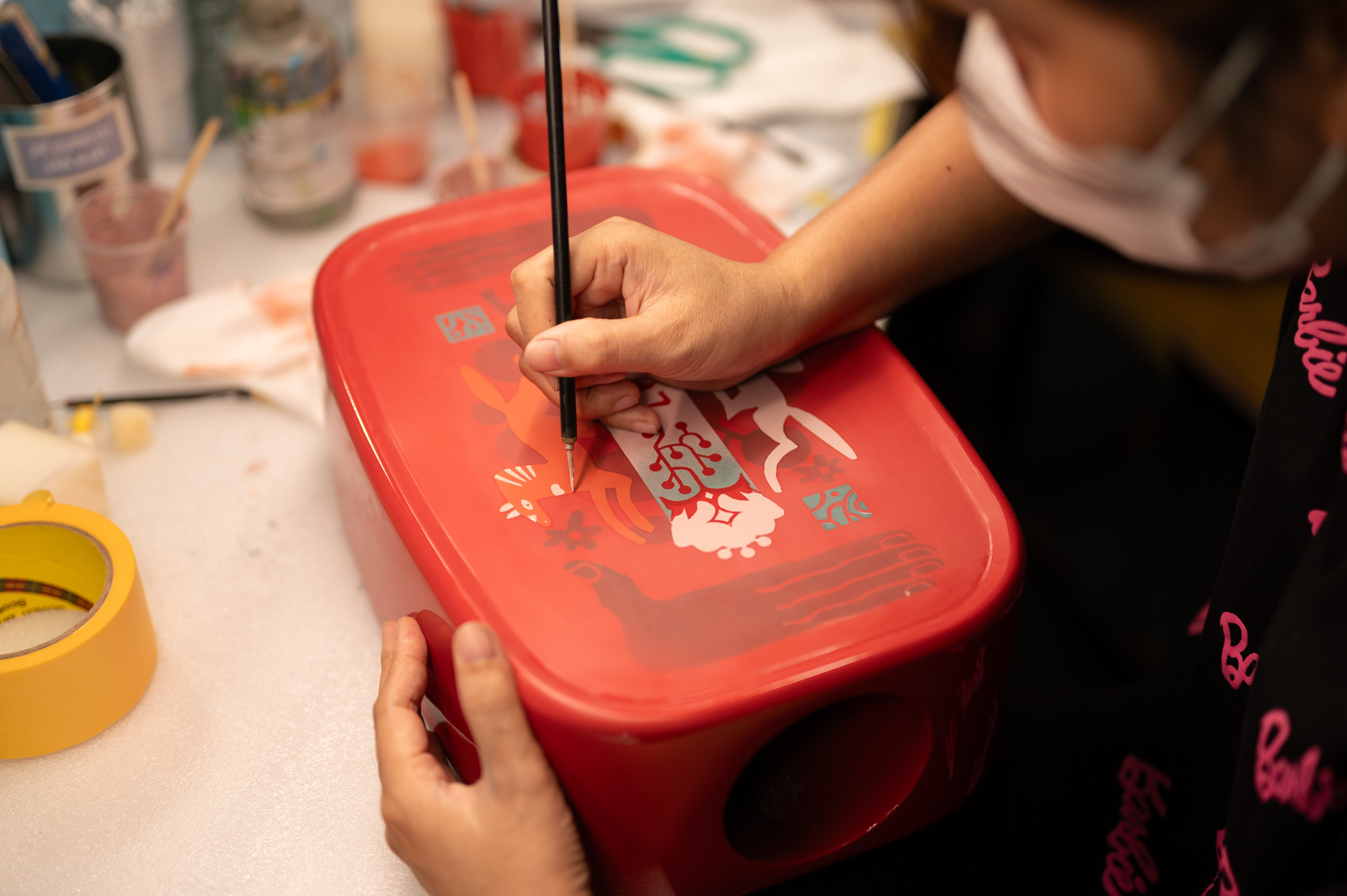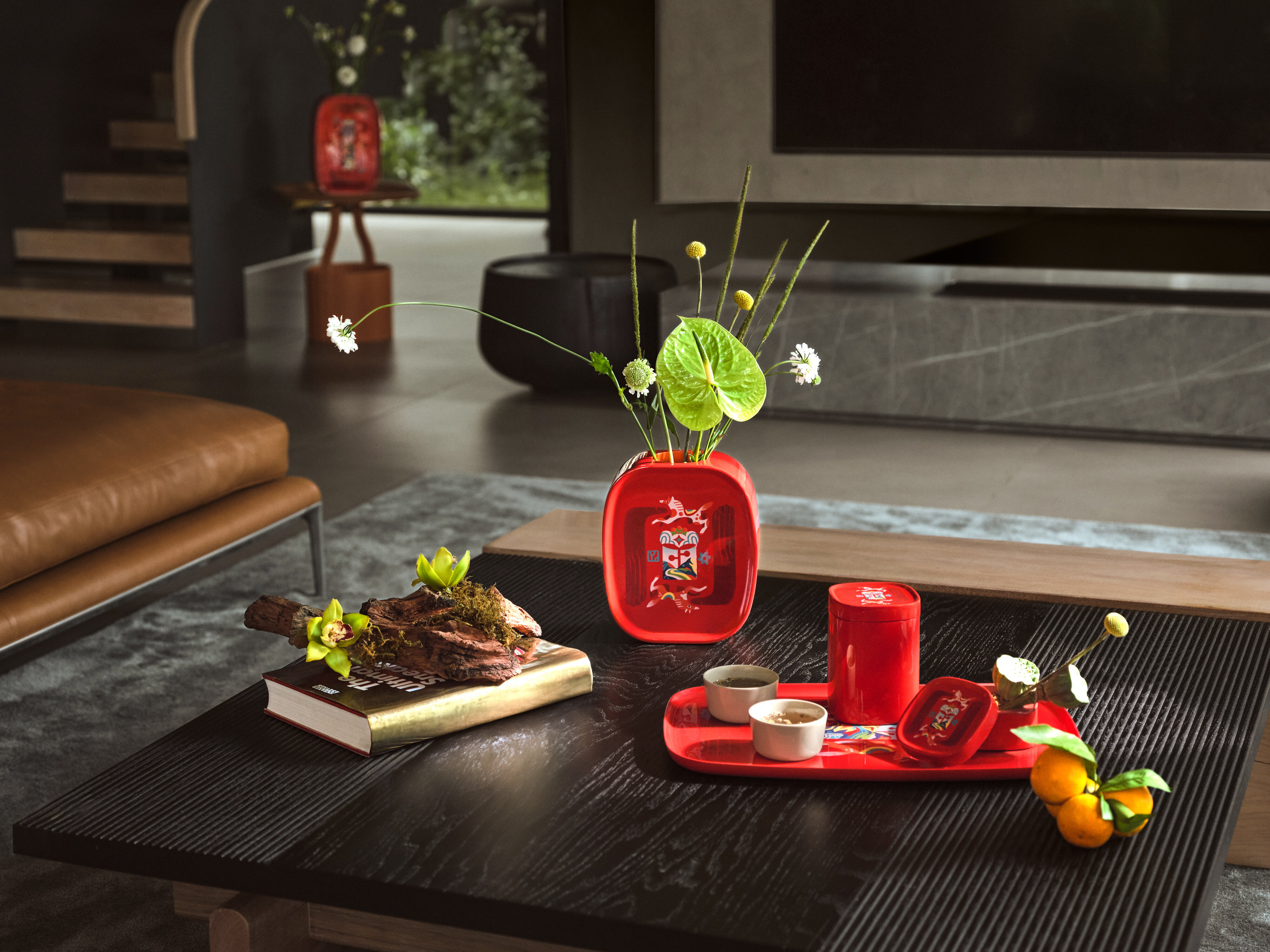- Home
- Blog
- INSPIRATION
- HAND PAINTING ON LACQUER
HAND PAINTING ON LACQUER
Hand painting on lacquer: The intricacies of material challenges
"From the need to reinforce wood materials against water and termites in the past, through a long and tumultuous journey, Vietnamese lacquer has found its rightful place in art and the lives of the Vietnamese people. In contemporary life, hand-painted lacquer products have gained popularity due to their vibrancy, intricacy, and the fascinating stories behind the complex artisanal production process. "


The prosperity of lacquer art is closely tied to traditional lacquer painting and the renowned names in Vietnamese art such as Nguyễn Gia Trí, Phạm Hậu, Hoàng Tích Chù, and more. A generation of artists from the prestigious Indochina School of Fine Arts played a significant role in the development of the art of Vietnamese lacquer, ushering in a period of prosperity in the 1930s and 1940s. After enduring many challenges, Vietnamese lacquer has now become a name of special interest, partly due to the explosion of media attention following up the sales at renowned auction houses such as Christie’s or Sotherby. However, much of the interest stems from the story behind this traditional art form, considered a "representative icon" of Vietnamese art. Furthermore, today, lacquer is not confined solely to the realm of fine art but has entered everyday life with a broader range of applications, making it more accessible. Lacquer products in modern life include vases, tea boxes, serving trays, and traditional Vietnamese New Year candy boxes, all of which seamlessly blend into living spaces.


To understand the intricacies of lacquer art, one must comprehend the key stages in its production. In a simplified manner, lacquer painting involves two main stages: applying layers of lacquer and repeatedly sanding to achieve the desired surface smoothness and color depth. More specifically, a lacquer product must go through numerous different stages, from shaping the base material (usually wood, MDF, or artificial fiber), to applying foundation layers, wet sanding, color application, color sanding, final polishing... Depending on the design and the artist's preferences, additional decorative techniques like eggshell inlay, mother-of-pearl inlay, silver/gold leaf application, engraving, and hand painting can be incorporated to enhance the aesthetics and value of the product. The complexity, meticulousness, careful planning, patience, and passion of the artists and artisans are prerequisites to harmoniously create the outstanding lacquer paintings.


"The complexity, meticulousness, careful planning, patience, and passion of the artists and artisans are prerequisites to harmoniously create the outstanding lacquer paintings."
The difference between ordinary lacquer and premium lacquer lies in the craftsmanship and precision during production. The more layers of lacquer applied, the more durable and beautiful the product becomes, thus increasing its value. Additionally, the use of techniques like silver, gold leaf gilding, hand painting are considered the highest level of advanced techniques that determine the value and premium status of a product.


Speaking of hand painting on lacquer, this technique demands double the precision from the artists to authentically recreate the original paintings done on paper or in digital environments. Seasoned artists often highlight the greatest challenge of hand painting in the exceptionally smooth surface of lacquer, which makes it less receptive to paint. Handling variations in brightness, darkness, and color intensity can be managed with ease on paper through color dilution or pen pressure adjustment. However, with lacquer, artisans must creatively adapt and translate these variations into different colors and techniques to represent the desired nuances. For intricate artworks with multiple details and various colors, artists must carefully plan the sequence of color blocks, decide which areas to paint first, and which to paint later. This is known as the "blocking" stage, where artists mask specific areas around details and lines. After finishing one area and allowing it to dry, the artists remove the masking and move on to other sections. This process of blocking, painting, and waiting for the paint to dry is repetitive until the entire painting is complete. This complexity and meticulousness result in the completion of a hand-painted lacquer product taking up to several months.


"This complexity and meticulousness result in the completion of a hand-painted lacquer product taking up to several months."
It is for these reasons that lacquer painting is considered intricate and demanding. As a result, hand-painted lacquer products have always received admiration and demand. This is a technique widely used by many prestigious global brands and fashion houses for the development of lacquer products that are widely embraced worldwide, especially among connoisseurs in Europe.
In Vietnam, Hanoia stands out as the epitome of premium lacquer products. Explore more about Hanoia's lacquer interior decoration items to gain a better understanding of hand-painted lacquer products. Elevate your living space with luxurious lacquer products that bear the design signature of Hanoia.

 EN
EN  VN
VN